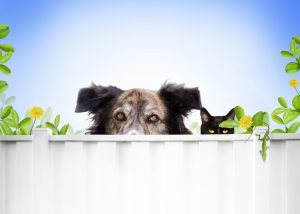 Spring has sprung and while it’s the season for kittens, puppies and all things cuddly, it’s also a time when your backyard can turn into a minefield for your furry friends. When the Petplan UK office researched just how many pet???s required emergency veterinary care per year, they found that 1 out of 3 pets need to be rushed off because of an emergency every year. Considering many Australian families include their 3 or 4 pets, many of us are spending a night per year in the Animal Emergency waiting room. Thankfully for Petplan customers, their concern doesn’t need to be spread across the well-being and cost of care ??? but none the less prevention is always better than a cure. Many Australians keep a floral garden, veggie patch and / or indoor plants. Considering how many plants are toxic for dogs and cats, prevention may be as simple as shopping for different plants at the nursery this Spring.
Spring has sprung and while it’s the season for kittens, puppies and all things cuddly, it’s also a time when your backyard can turn into a minefield for your furry friends. When the Petplan UK office researched just how many pet???s required emergency veterinary care per year, they found that 1 out of 3 pets need to be rushed off because of an emergency every year. Considering many Australian families include their 3 or 4 pets, many of us are spending a night per year in the Animal Emergency waiting room. Thankfully for Petplan customers, their concern doesn’t need to be spread across the well-being and cost of care ??? but none the less prevention is always better than a cure. Many Australians keep a floral garden, veggie patch and / or indoor plants. Considering how many plants are toxic for dogs and cats, prevention may be as simple as shopping for different plants at the nursery this Spring.
Finding out which plants are toxic:
There are several online lists to help you ensure that you don???t plant plants that are toxic or commonly cause allergic reactions (please see links to some of these lists below). Although these lists are comprehensive, few of them are Australian, so the best thing to do would be to contact your local veterinary practice, to see if they have a list on hand. ??When shopping for bulbs and seeds this season, best to keep your pet and possible visitors in mind.
Tips for avoiding a toxic situation:
- Take an audit of your backyard, using a comprehensive list and make sure that there are few or no toxic plants already there.
- Never assume that your dog or cat will not change how interested they are in eating a plant that has been there for years.
- Cornell University suggests feeding your dog bran or vegetable fibres, so that they don???t crave fibre.
- If you notice that your pet is experiencing any of the toxicity symptoms – vomiting, diarrhoea, difficult breathing, abnormal urine, salivation and lethargy ??? don???t waste time, go see your Vet as soon as possible.
Some plants to avoid:
- Ivy: While this plant doesn’t seem to be popular amongst dogs, it is certainly toxic and may cause vomiting, pains, diarrhoea and hyper-salivation.
- Lilies:??You may already know that Lilies are very toxic to cats. It only takes a small portion for a cat to be effected, which can cause kidney failure. Lilies are however not toxic for dogs.
- Baby???s Breath: This plant is more commonly seen in a bunch of flowers from the florist, but if your pet ingests it, they could experience vomiting and diarrhoea.
- Chrysanthemum: While this flower is not usually deathly, if your dog ingests it they can experience vomiting, dermatitis and diarrhoea. If certain parts of the plant are eaten, they may even become depressed and lose coordination.
- Tomato Plant: The staple in Aussie veggie gardens is the trusty tomato plant. Unfortunately for your kitty or dog, tomatoes and tomato plants can cause vomiting, diarrhoea, hyper-salivation, lose their appetite, become drowsy, confused, their behaviour may change, Central Nervous System Depression and slowed heart rate. In short ??? keep your pets away from tomato plants!
- Daffodil: Both dogs and cats find daffodils toxic, causing amongst other things low blood pressure, tremors and cardiac arrhythmias
Some links to help with your audit and shopping:
Toxic and non toxic plants: http://bit.ly/171eiAm
Poisonous plants: http://bit.ly/1c78ayB
Cat world: http://bit.ly/1a112yL
This Blog was written by the furry family at??Petplan Pet Insurance??&??Petplan Equine??Australia. We love pets and ??people who love pets!??We offer pet Insurance for Dogs, Cats, Horses & Ponies (including third party liability; horse floats, saddlery & tack). We specialise in ???covered for life??? dog insurance, cat insurance and equine insurance. Please visit us on??facebook??or on our??website.


